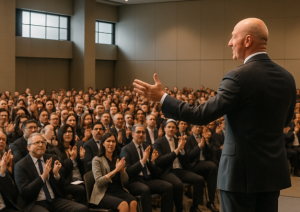Future of Work: How Tier 2/3 Cities Will Drive the Next Technology Revolution
Over forty years ago, IBM set up an experiment. They installed terminals at five of their employees’ homes to understand work-from-home. Soon enough, it freed 58 million square feet and delivered $2 billion in savingsBy 2009, 40% of IBMers across the globe were working from their homes. In 2017, IBM reversed this strategy — it began calling back thousands of its remote workers in the US to work from the office “shoulder to shoulder”. Not just IBM. Marissa Mayer famously brought back remote workers at Yahoo in 2013. Bank of America did so in 2014.
Fast forward to 2020 and here we are: the pandemic has changed work forever. Working from home has become the new normal. When the entire tech world moved home, notable trends emerged – the most significant of them being the rise of tier 2/3 cities as viable locations for high-tech work. Whether it’s reverse migration to smaller towns in the US or Indian professionals returning to their hometowns, knowledge work post-2020 is bound to be more spread out.
Today, as we approach the end of 2021 and gear up for the ‘great hybrid experiment,’ one thing remains clear: whatever the future of work may be, multinationals will only expand their operations to these cities due to the increasing availability of talent.
New Talent is in the Hinterlands
India has been the leading technology sourcing destination of the world, creating a fertile soil for Global Capability Centers (GCCs). However, most of these centres operate out of tier 1 cities, which is home to only 35% of the Indian population. Companies have been hesitant to set up offices beyond these cities due to unavailability of top-notch infrastructure such as uninterrupted electricity, high-speed internet and absence of an ecosystem for collaboration and innovation.
The pandemic has changed this paradigm.
According to Talent500 by ANSR, there has been a 30-40% increase in demand for workforce in tier-2 cities within tech teams across sectors. Organizations have realized that productivity doesn’t fall when people work from home. Employees have learned to collaborate well while working remotely, so much so that many professionals from tier 1 cities have shifted their base to their hometowns for a better quality of living. ANAROCK property consultants even predicts that this “reverse migration” phenomenon is likely to tip the housing demands away from tier 1 cities (which previously accounted for 70% of the overall residential market) towards tier 2/3 cities.
‘Hub-And-Spoke’: Office Model of the Future
Flexibility has become the No. 1 requirement for top talent when considering joining a company, and companies need to offer a solution that works well for both the company and its employees. Hub-and-spoke model with one central office hub and smaller spokes (satellite offices) provides greater flexibility as employees can go to an office close to their home. It also gives employers access to a wider talent pool for creating a global talent hub, while maintaining the company culture that they worked so hard to attain. The Stanford economist Nicholas Bloom has found that most of the people who left metros during the pandemic moved to nearby suburbs. That means large organizations will likely have just enough employee density to put new spokes in Tier 2 & 3 cities — saving employees a long daily commute, but keeping them culturally cohesive.
Government bats for ‘Spoke-ization’
Many Indian states have already expressed their commitment to develop tier 2 and tier 3 cities to usher in social and economic development. While Telangana government is planning IT towers in Tier 2 and 3 towns, IBM has already opened a Client Innovation Centre (CIC) in Mysuru in response to the ‘Spoke-Shore Strategy’ floated by Karnataka Digital Economy Mission (KDEM). Karnataka government is aiming at attracting at least 100 Global Capability Centres (GCCs) to smaller cities by 2025 to build a connected global talent hub.
GCCs at the Centre of this Growth Story
Given that 30% of India’s GDP is driven by the digital economy, initiatives such as KDEM’s Spoke-Shore would converge on setting aspirational goals for Global Capability Centers and creating direct as well as indirect employment opportunities beyond Tier 1 cities. India is already home to over 1,430 GCCs and with every business being a technology business today, companies cutting across continents and industries see value in setting up high-technology capability centers in India.
The hub-and-spoke model of work will prove crucial as it offers a middle ground between packed city offices and the isolation of working at home. It will be an important part of any company’s locations strategy as it helps decongest cities, promote cultural engagement, allow better diversity and inclusion, and ultimately, emerge as the holy grail of productivity.
As reverse migration and hybrid model of work becoming the norm, tier 2 and 3 cities stand poised to drive the next technology revolution.




